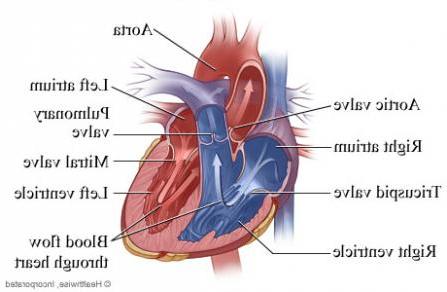本页包含以下部分:
什么时候手术修复主动脉夹层是可取的?
主动脉夹层的修复是如何完成的?
这种手术的风险和好处是什么?
典型的复苏包括什么?
什么时候手术修复主动脉夹层是可取的?
An 主动脉夹层——分割, 眼泪, or weakened area in the lining of your body's main artery—is often a life-threatening condition and represents one of the rare true emergencies in cardiac surgery. Medication can sometimes be an appropriate treatment option for a dissection of the 降主动脉. But immediate surgery will be advisable for nearly all dissections of the 升主动脉或主动脉弓.
一旦升主动脉发生夹层, 25%至30%的患者在数小时内死亡, 一周不做手术后死亡风险接近100%. Our cardiac surgeons have long been known for their expertise in the repair of acute, 急诊主动脉夹层.
主动脉夹层的修复是如何完成的?
There are a number of ways to repair or replace the portion of an aorta damaged by a dissection. Which option is used will depend on such factors as where the dissection is located, 你的主动脉有多少需要修复或更换, 以及你的整体健康状况. Your surgeon will determine which of the following procedures is most appropriate in your particular situation:
- 开胸手术 to repair an 主动脉夹层 involves making a 7- to 10-inch incision over the middle of the sternum, 或胸骨, 然后分开胸骨,进入心脏. In some cases a less invasive option, involving a slightly smaller sternal incision, is possible. 无论哪种情况, the actual repair involves replacing the damaged portion of your aorta with a graft — a tube the same size as your aorta, 由耐用的人造材料如涤纶制成的, 是缝合的, 或缝, 到合适的位置.
在手术过程中有必要让你的心脏停止跳动, so the operation can be performed on a motionless and bloodless field; while your heart is stopped, a device known as a heart-lung bypass machine will take over your heart's function and maintain your circulation. 偶尔, 在包括替换部分主动脉的复杂手术中, you may also be put into a state known as hypothermic circulatory arrest; this involves lowering your body temperature to significantly slow your body's cellular activity, 让你的血液流动暂时停止. (“体温过低”一词来自希腊语,意思是“低热量”,而“循环停止”的意思是你的血液循环停止了, 或停止.)在其他情况下, a technique known as axillary cannulation (or the insertion of a drainage tube, 被称为套管, 在你腋窝的动脉里, or axilla) can allow aortic replacement to be performed without hypothermic circulatory arrest; this advance may reduce the incidence of postoperative strokes and neurological deficits.
- 血管内手术 可能是降主动脉夹层患者的一种选择. This minimally invasive procedure involves making a couple of tiny incisions (often just 1 to 2 inches) in blood vessels in your groin; inserting long, thin tubes known as a catheters through the vessels to the point where your dissection is located; and then using X-ray guidance and long, thin instruments threaded through the catheters to place a little mesh tube known as a stent graft inside the affected portion of the vessel. (The term "endovascular" comes from Greek and Latin words meaning "within a vessel.")
在适当的情况下, endovascular surgery can sometimes be done with the patient under local rather than general anesthesia; in addition, it does not require hypothermic circulatory arrest or use of a heart-lung bypass machine. 因为这种方法完全避免了打开胸腔的需要, 它通常会导致更快的愈合.
- Valve-sparing手术 can be considered for operations on the part of the aorta closest to the heart, the aortic root. This procedure involves replacement just of the damaged portion of the vessel, not of the 主动脉瓣 as well; it is thus appropriate only for patients whose 主动脉瓣 是完整的还是可修复的. 另一种选择被称为复合移植物, and it involves not only replacing the dissected portion of the aorta but also 更换主动脉瓣 带有机械阀门.
这种手术的风险和好处是什么?
It is important to keep in mind that every medical choice involves a trade-off between risks and benefits—whether it is to undergo surgery, 服药, or even just carefully monitor a condition (an option known as "watchful waiting").
在主动脉夹层的情况下, 然而, 尤指升主动脉或主动脉弓, 手术通常是唯一可行的选择. 如上所述, the risk of death approaches 100% after a week without operating on a dissection of the ascending aorta.
The risks involved in surgery are appreciable, but far lower than not operating. 不同病人的风险会有所不同, 取决于年龄和整体健康状况等因素, 但是平均死亡率, 或者死亡的风险, 从主动脉夹层修复中减少15%. 并发症, 比如中风, 也发生在一定比例的病例中, depending on the severity of the dissection; immediate surgery is often associated with better outcomes and fewer complications. 除了, 任何外科手术的并发症风险都很小, 比如感染.
一次成功的修复有很多好处, 大多数幸存的病人已经完全恢复了生产力. 病人 usually need to 服药 for the rest of their life to control their blood pressure, 这样可以减少主动脉壁的压力. 关闭, 对此类患者进行长期随访也是可取的, 观察并发症的发展或进一步的解剖. Up to 30% of patients may require another operation to repair a subsequent dissection or aneurysm of their aorta.
典型的复苏包括什么?
一个典型的心脏直视手术需要4到6个小时, in some cases up to 8 hours; patients are then maintained under general anesthesia for an additional 4 to 6 hours. 如果他们的心脏运转良好,没有过多的出血, 他们可以从麻醉中恢复过来,并拔掉呼吸管. Most patients stay in the ICU until midday of the day after their procedure; if they continue to do well, the drainage tubes in their chest can then be removed and they can be moved to a regular hospital bed later that day.
The typical hospital stay ranges from 7 to 10 days, in some cases up to 14 days. 在这一点上, 绝大多数病人都能回家, 在探访护士服务的支持下, though about 15% to 20% may need to spend some time in a rehab facility for more extensive rehabilitation. 出院后, patients are advised not to drive for about three weeks and not to lift anything heavier than 5 pounds for about 6 weeks. 超过这个点,他们可以恢复正常的日常活动.
病人往往会惊讶于控制疼痛是多么容易. 手术后的第二天, 大多数病人不用静脉注射止痛药物就会感到舒服, 只服用口服止痛药, and the overwhelming majority are discharged home on just Tylenol or Motrin.
在需要微创手术的情况下, both the length of the operation and the recovery period are typically shorter (and much shorter in the case of endovascular surgery).
审查页面:2018年6月26日
编辑:Jock McCullough, MD
